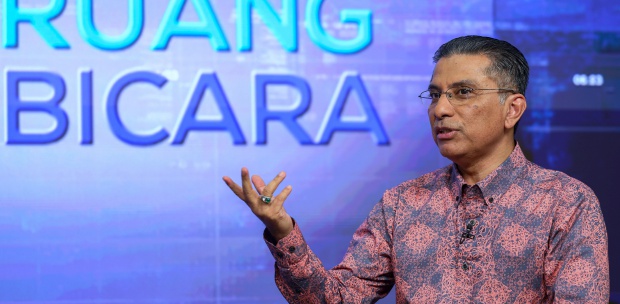IF there is one industry that has seen a massive boom, it's the gaming industry.
Despite the pandemic placing the world at a standstill, the global gaming industry has been thriving.
With social distancing requirements and lockdowns in varying measures reducing consumer and business activities to a minimum, gaming has proved to offer a sort of reprieve from the harrowing state of the world.
Globally, the industry generated a revenue of US$177.8 billion in 2020, a 23 per cent increase year-on-year. When the pandemic hit, the industry generated more than US$300 billion with about 2.7 billion players.
I count myself fortunate to have experienced different sides of the equation within the gaming industry. With a background in the developer and publishing space for over 15 years, I have had the privilege of having a front row seat in participating and watching the gaming industry grow and now, ultimately thrive.
And since joining MDEC in 2016, I have had the pleasure of being part of a team that is working towards building Malaysia and the Southeast Asia region into a global digital content hub.
This is on the back of the traction that the gaming industry is seeing in the Southeast Asia region. In fact, the gaming industry in the region has generated a revenue of over US$4.4 billion in 2019, a 16 per cent year-on-year growth. We have seen innovative companies taking emerging technologies in their stride.
For example, Vietnam-based company Sky Mavis developed internationally popular blockchain game Axie Infinity, which allows players to earn income through non-fungible tokens (NFTs) and cryptocurrencies by breeding, battling, and trading digital pets called Axies. The company not only has grown its player base, but it has gained the attention of venture capital firms.
Just five months after raising a US$7.5 million round of Series A funding, Sky Mavis added an additional US$152 million Series B round led by Andreessen Horowitz. The company is now reportedly valued at a whopping US$3 billion.
This is testament to the fact that we are living in interesting times, amplified by the fact that we are in a region that boasts so much potential in a promising sector.
In Malaysia, we have a game market of US$786 million, ranking it the third largest game market in Southeast Asia in 2020. Malaysia is a major outsourcing player, with local game studios building a global reputation for developing original IP games and providing outsourced development for the biggest international publishers.
And we are riding on this strength and creating opportunities by ensuring that the country's tertiary education system provides a solid foundation for producing talent.
In Malaysia alone, there are approximately 50 game-related courses offered by local higher learning institutions. MDEC is also collaborating with the Ministry of Education in designating 11 universities and 5 polytechnics as Premier Digital Tech Institutions, providing students with quality theoretical and practical training programmes. This is part of the plan by the government to ensure that future graduates are innovation-driven and industry ready.
Based on the Southeast Asia Game Industry Report 2021 developed by MDEC, a majority (64 per cent) of game companies in the region remarked that most entry-level talent are semi-ready and possess basic skills but lack the practical exposure. These talents require between three to six months of practical training in order to meet the demand of the game industry.
With our plans to bolster the talent pipeline, we hope to narrow the skills gap between graduates and what is needed within the industry in the years to come.
On top of that, we want to ensure that the distribution of skills is balanced in the country. A lot of talent are very much centralised in either Kuala Lumpur or Selangor.
Through the industry report, we have outlined recommendations to move forward optimally in the industry. Among them
include strengthening government policy, ensuring that gaming companies have the financial capabilities for capacity building, and the most important — to me at least — is to continuously build a sustainable talent pipeline.
I hope to see a future someday when being a gamer, programmer, game artist, and concept artist is accepted as viable professions.
We are undoubtedly moving at a rapid pace now, with significant changes since 2015, when countries within Southeast Asia started focusing on the development of the creative sector.
Not only do we need to focus on building a solid foundation for the gaming ecosystem to thrive, but we would also have to be adaptable to the transformation of the gaming industry from the traditional model to a more diversified and decentralised model. Soon, we will see the confluence of gaming in the metaverse.
It is my belief that the gaming industry will be one of the first industries to take advantage of the new paradigm shift, and I am truly excited to both witness and be part of this exciting change — a change that will be anchored by a future in which Southeast Asia becomes a globally recognised hub for the games industry that elevates the whole ecosystem, including the industries supporting creativity and digital content.
The Southeast Asia Game Industry Report 2021 exemplifies how much potential, talent, skills, and youth are available.
It is up to us to harness these rich opportunities available to us through the spirit of collaboration, because only with greater cooperation and coordination can we be better and stronger together.
The writer is Director of Digital Creative Content at the Malaysia Digital Economy Corporation (MDEC)
The Southeast Asia Game Industry Report 2021 can be found here: https://mdec.my/wp-content/uploads/SEA-Game-Industry-Report_Final.pdf
The views expressed in this article are the author's own and do not necessarily reflect those of the New Straits Times





